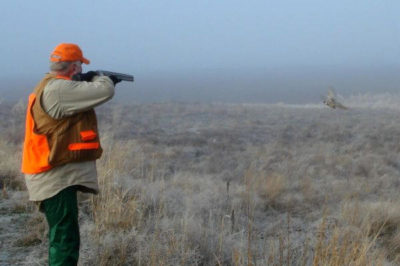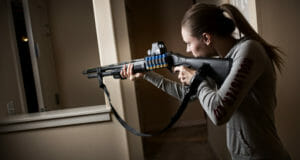 Aim small… hit small — anyone who has participated in the world of target practice, competition, sniper school, self-defense courses, or the military, whether with a firearm or archery, is aware of this expression. Anyone who saw the epic movie The Patriot starring Mel Gibson” in 2000 will remember him telling his two young sons this during their involvement in an attack on the British column.
Aim small… hit small — anyone who has participated in the world of target practice, competition, sniper school, self-defense courses, or the military, whether with a firearm or archery, is aware of this expression. Anyone who saw the epic movie The Patriot starring Mel Gibson” in 2000 will remember him telling his two young sons this during their involvement in an attack on the British column.
The idea is to aim at a specific small section or part of a target rather than the target itself. When target practicing on paper, there is always a bullseye on the target, but nothing really differentiates it from the rest of the target other than rings. You can easily put a red sticker or draw a small red circle as your aim point, giving you the smaller target.
The psychological aspect of aim small, hit small is that, if you aim at just the target, you can miss the target. But if you aim at a very small place on that target, you will hit the target. During the filming of The Patriot, Mel Gibson was given the advice by his technical advisor to “aim small, hit small” while practicing with a musket. He was told that during those early years, men were taught that, if they aimed at the man and missed, you missed the man; but, if you aimed at a button on his jacket and missed, you still hit the man.
How to hide your guns, and other off grid caches…
Ask any shooter who has been shooting any length of time, participated in competition, or attended formal training (either civilian or military) and they know the advantage of aiming small. There is just a psychological thing going on which you can yourself discover at the range. Put a target out there at 50 to 100 yards and fire the whole magazine or clip as fast as you can at that target. Now replace that target with a new one and take your time aiming and breathing, and fire all your rounds again. Big difference. Now, put up a new target, only this time put a small one-inch red sticker in the bull’s-eye and concentrate your aim at that dot. Carefully squeeze off three rounds and see how close you are. You will be surprised the accuracy when you aim at a very small target.
Now this practice is great for stationary targets while you sit at a shooting bench, but how many actually shoot while moving or at a moving target? Here is another area less practiced, but equally important, especially if you are practicing for personal defense. Depending on where you are practicing, you can probably at least stand up and shoot, or lean against a wall. If at an outdoor range, you can maybe walk and shoot or fall to the ground and fire. Use the “aim small, hit small” advice here to practice, setting up your targets with a small aim point and see how often you can hit at least the target.
If you are lucky enough to have a range or shooting club in your area that has a moving target range, and or a combat pistol or defensive pistol range or club, then you are lucky. Most of these have life-like scenarios, with buildings and moving targets for you to shoot at. You will be amazed at the difference it will make if you use the same practice methods on a moving target as you do on stationary one, just by adding a focal point.
Training your mind and your eye to pick a small part of that target, whether on paper, on fur, or on an aggressor, can and will mean the difference between a lot of shell casings on the ground and none on the target, some on the ground with holes in your target, or the end of an aggressive act against you and or your family.
I remember the first time that I was practicing with my father for my first upcoming whitetail deer hunt at age 16. He took me and my brand new Marlin 30 x 30 (still in the box) out to the woods with a pile of cardboard boxes, string, and red crayons. He set up some boxes maybe 75 yards away, showed me how to load my shiny new rifle, and proceeded to teach me how to squeeze the trigger. Now these boxes were maybe 2 ft square with a circle drawn about a foot in diameter. I was pretty good at hitting in the circle while lying down. Next he had me repeat this, standing up off hand, and I missed the box more than I hit it. Then he drew a little red circle in the center and had me shoot and every round hit inside the larger circle.
Now, I thought I was done, and quite the expert by then, smiling from ear to ear. But Dad wasn’t quite done with me. You remember I said we brought string? Next my father tied a small box about one foot square and weighted with dirt in it to a tree limb and had me repeat the same process after he started swinging it. Only this time I had learned a very important lesson. Without him coloring a little circle in the middle of the box, I concentrated on a black mark on that box and hit that box with all six shots.
That day I learned a valuable lesson which I practice every time I pick up any firearm, and I pass on to everyone I can who wants to improve their shot placement. Like my Dad told me on that first hunt, successful I might add, he said “Don’t just pick a spot on that buck, pick a hair!”
Sign up for Off The Grid News’ weekly email and stay informed about the issues important to you
 Off The Grid News Better Ideas For Off The Grid Living
Off The Grid News Better Ideas For Off The Grid Living




